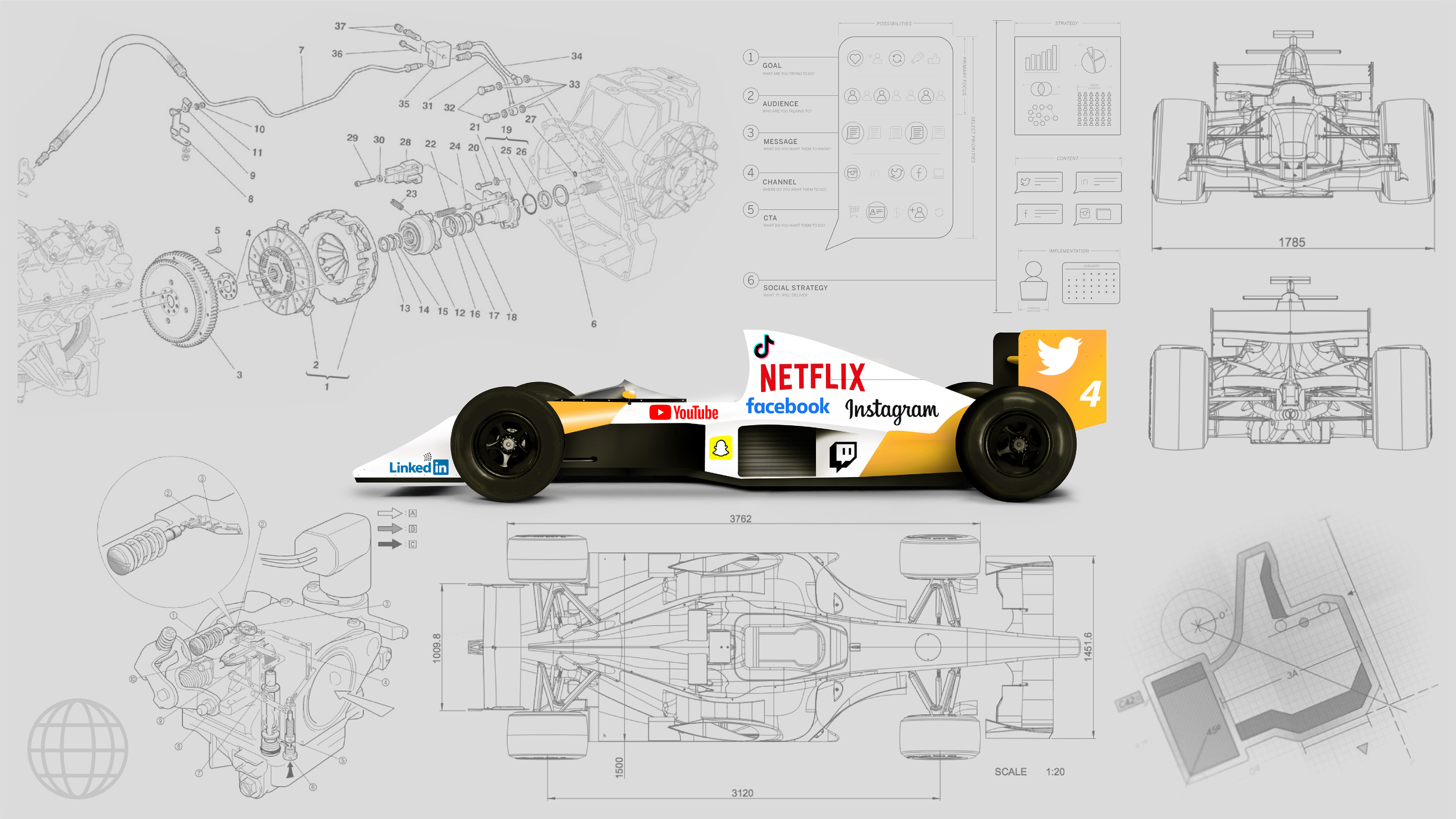F1’s Incredible Online Rise
Despite being the pinnacle of worldwide motorsport, for so long, Formula One has felt like a footnote in any sporting conversation. It was a niche interest at best, the favourite pastime of a few petrol-heads here and there. Under former chief-executive Bernie Ecclestone, the sport was stagnating. Its core fanbase was ageing, the racing growing tiresome. As the World Driver’s Championship became a matter of tug-of-war between Sebastian Vettel and Lewis Hamilton, grand prix weekends became an afterthought for many – which is surprising, given the sport’s nature.
Twenty drivers. Ten teams. High-octane racing in cars that can reach up to 215mph. A global calendar, with races in countries from Brazil to Bahrain, Austria to Abu Dhabi. It sounds like the perfect cocktail for a spectator sport, right? Even more so, it sounds like a sport born to succeed on social media.
With practise taking place on a Friday, before race day on Sunday, Formula One sees the biggest names in motorsport go head-to-head for three straight days, every two weeks. The events are packed with high-speed overtakes, spectacular crashes and spins, pit stop drama and iconic scenes of champagne-soaked celebration that would make the sport a hit online (or so you’d think).
F1 has always had incredible potential. All it needed was the right management to help it to achieve it – and in 2016, it arrived. In swooped Liberty Media, purchasing the Formula One Group for £3.3BN. Ecclestone was gone less than 12 months later. From then on, the sport has been on a one-way path to success – and its social media has followed suit.
F1 Hits Top Gear
Though it took a couple of years for the project to come to fruition, Formula One has never looked back. At the time of writing, it is the world’s fastest growing sport on social media, across all possible channels and metrics. What makes that even more remarkable, is that F1 didn’t even have accounts on major platforms Instagram or YouTube until 2014 and 2015, respectively. It has gone from being a dinosaur of the sporting arena, to being its leading light.
The sport has finally managed to harness its striking nature. Now, its social platforms are awash with futuristic graphics, breath-taking visuals and clips of the jaw-dropping action. It makes for incredibly sharable content. Drivers, too, have now stepped up their game. Lewis Hamilton, F1’s current poster boy and an active online figure, claims 30+M followers on Instagram and Twitter combined.
It has created a beautiful, three-way synergy between fans, drivers and the F1 domains. This interaction saw video views across Formula One’s social platforms reach 4.9BN in 2020. It’s also helped F1’s follower count to see year-on-year increases of 35% since 2019.
But it’s not just better social media content that caused F1’s 99% boom in total engagements in 2020. The sport has managed to tap into the Gen Z and Gen Y market – which is no easy feat.
A Changing Demographic
Long gone are the days of F1’s audience being exclusively made up of hardcore motorists and car-loving intellectuals. The sport now boasts a huge millennial following, which has been boosted by its presence on Netflix. ‘Drive to Survive’, launched in 2019, is a dramatic, fly-on-the-wall documentary that depicts – as it says in the title – the sport’s ruthless nature. It makes for brilliant viewing, welcoming even the most casual fan into a wave of, young, die-hard Formula One lovers.
What the documentary also allowed for, is access into the personable side of a young and very likeable paddock. ‘Drive To Survive’ portrayed the engaging stories of Lando Norris, George Russell and Charles Leclerc, for example, giving those young drivers a huge social media following that they will carry with them for the rest of their careers. Norris, who is also a popular streamer on Twitch, is a particular favourite of ours here at Uni4m.
All of it has culminated in a remarkably young supporter core. According to a report by Nielsen Sports data, F1 has experienced a growth of 77% in fans aged between 16-35.
The youthful demographic has created benefits of its own. The growing phenomenon has brought with it a vast field of content creators. F1 is now beginning to see a similar social media frenzy, before, during and after a race that major football matches will see online. Also, in similar fashion, there is an expanding bank of fan-lead content available for F1-lovers to tap into once the chequered flag has been waved. Whilst it still falls slightly behind other sports in this regard, there aren’t many topics that trend higher on a weekend than the latest grand prix.
A Race To The Top
However, Formula One’s digital success isn’t just limited to social media. The sport’s official podcast, Beyond The Grid, has become the No.1 motorsport podcast in the USA, UK, Australia and Canada, amongst other countries.
F1’s Esports series also racked up record numbers, gaining 11.4M live stream views across all platforms in 2020. This has helped the brand make headway in places such as China, where Formula One says it saw followers on Weibo, WeChat, Toutiao and Douyin reach a colossal 1.9M.
To achieve such incredible increases, across a variety of different media, is testament to the unrivalled effort that has been put in to making F1 the sport it should be. They’re riding a serious social media wave at the moment, and one that has been built from the ground up. Whilst it remains to be seen how long the growth can be maintained, it is a remarkable achievement nevertheless. Formula One is here to stay.
With a host of races still to take place this season, keep an eye on F1 profiles. They’re well worth a follow.

